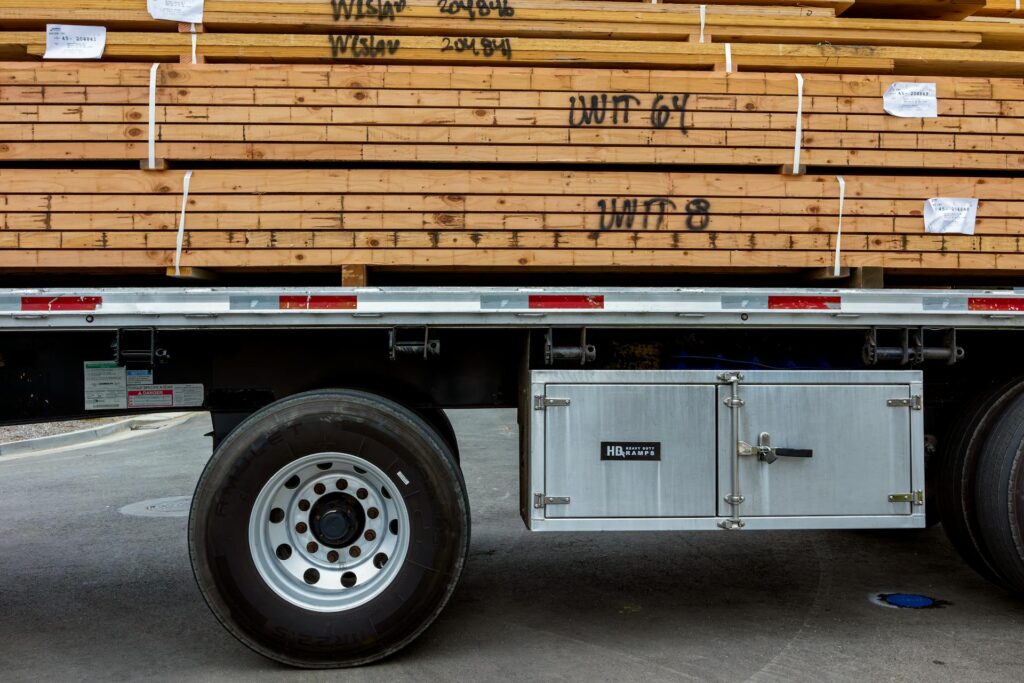The flatbed trucking industry is experiencing a significant surge in freight rates, driven by a combination of steel and lumber tariffs and the usual seasonal demand spike. With shippers working to get ahead of potential cost increases and a tightening trucking capacity, rates are climbing to some of the highest levels seen in recent years.
Flatbed Rates See a Sharp Increase
Over the past few weeks, steel and lumber pricing concerns have fueled increased freight movement, pushing flatbed trucking rates higher. According to DAT Freight & Analytics, the average flatbed spot rate rose to $2.13 per mile, with the load-to-truck ratio also jumping from 41.12 to 46.92 loads per truck—a clear sign of rising demand in the sector.
These rate increases reflect both tariff-driven shipping urgency and a natural seasonal uptick, particularly in industries reliant on flatbed transportation, such as construction, manufacturing, and agriculture.
Shippers Rush to Move Freight Before Tariff Impacts
The recent imposition of steel and lumber tariffs has caused a ripple effect throughout the supply chain. Many businesses are expediting shipments of machinery, raw materials, and oversized freight to avoid potential steel and lumber pricing spikes.
Chris Bahr, EVP and CIO at TA Services, pointed out that steel orders are currently experiencing a backlog, as buyers rush to secure inventory before tariffs drive costs higher. This trend is expected to sustain elevated flatbed freight volumes and pricing in the near future.
Seasonal Demand Further Strains Capacity
Beyond the pressure caused by steel and lumber tariffs, the trucking industry is also dealing with the usual springtime increase in demand. March and April typically see a rise in freight activity for sectors like construction, agriculture, and manufacturing, all of which rely heavily on flatbed transport.
Dean Croke, Principal Analyst at DAT, noted that this seasonal rush is adding further strain on capacity, compounding the rate increases already driven by tariff-related shipping surges.
Carrier Exits Tighten Market Conditions
Adding to these challenges, the flatbed segment has been hit by a wave of carrier exits, further tightening available capacity. With around 30% of flatbed loads moving on the spot market, the loss of trucking companies has made it more difficult to secure transportation at stable rates. As a result, many businesses are facing higher shipping costs and increased competition for available trucks.
What’s Next for the Industry?
Looking ahead, businesses should expect continued volatility in steel and lumber pricing and flatbed rates as the effects of tariffs and seasonal trends play out. Shippers and carriers will need to stay adaptable, monitor market conditions closely, and strategize their freight movements to avoid excessive costs.
For now, the best course of action is to secure transportation early and stay ahead of potential steel and lumber tariff increases that could further disrupt supply chains

